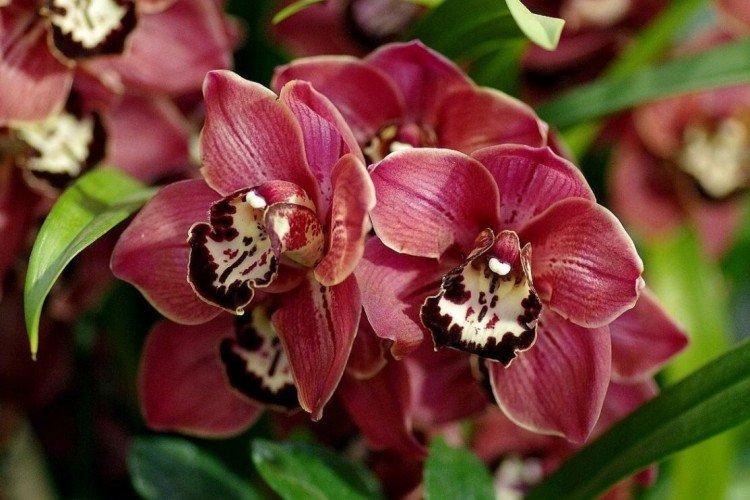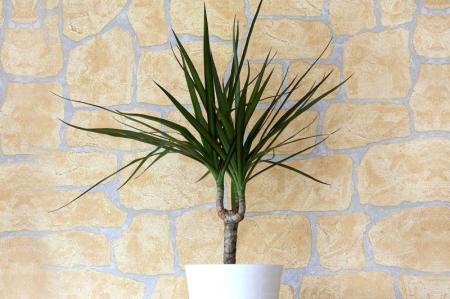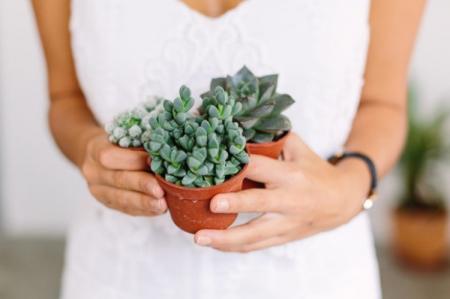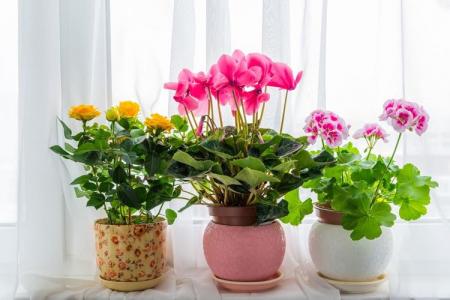
Many are still afraid to start orchids at home because of the beautiful exotic flowering. It seems that they must be very capricious and demanding, but this is not at all the case, and still strongly depends on the particular variety. Therefore, we have prepared for you a large catalog of orchid species with names and photos!
1. Phalaenopsis
Perhaps the most popular home-grown orchid variety. The graceful thermophilic variety prefers diffused light and easily tolerates heat. The substrate should dry out completely between waterings.

2. Cymbidium
The graceful tall orchid attracts attention with its interesting bud shape and long, sharp leaves. It is one of the most resistant varieties and is often grown for bouquets.

3. Wanda
First of all, this species attracts attention with an abundance of interesting colors. Reds, oranges, blues and purples are intricately intertwined in different combinations. Wanda definitely needs bright light and fresh air.

4. Aganizia
Depending on the specific subspecies, aganisia can be blue or cream. This orchid does not tolerate direct sunlight, but it loves high temperatures from 25 degrees.

5. Miltonia
This is one of the favorite species of breeders, because amazing hybrids are obtained on its basis. Fragrant flowers seem even brighter against the background of grayish leaves. And Miltonia blooms for a long time!

6. Cattleya
Large fragrant flowers are colored in all shades from white to dark purple. But keep in mind that Cattleya is really capricious and requires adherence to a strict regime, so it is unlikely to be suitable for beginners.

7. Zygopetalum
Zygopetalum can be called the undisputed leader among extravagant colors and unusual patterns. At the same time, the orchid is not at all capricious and is not demanding on temperature, humidity and even lighting.

8. Paphiopedilum
This is exactly the orchid, which is also called the shoe for the characteristic shape of the bud. The variety is extremely unpretentious, feels great on any window sills, but it needs high humidity and does not tolerate heat.

9. Angrekum
This is a snow-white orchid native to the forests of Madagascar. Yellowish buds are very rare. Angrekum is a real exotic, so it is difficult to take root at home, and only after the greenhouse.

10. Brassia
Brassia is called a spider orchid for its original appearance. She has interesting greenish flowers, graceful inflorescences, but a specific sweetish aroma. Brassia blooms actively in spring.

11. Rinhostilis
Rinhostilis attracts with beautiful long arrows and a unique aroma. This is an orchid with small flowers, collected in large inflorescences up to 60 buds in each.

12. Bulbophyllum
This is a whole category of orchids, which includes more than a thousand varieties and subspecies. Flowering - small, in two rows along a high shoot against the background of large fleshy leaves.

13. Lycast
Lycasta needs a stable temperature regime and abundant watering, but it pleases with a very long flowering. The flowers are very large and can reach 20 cm.

14. Nobile
Or Dendrobium Nobile. A beautiful and unpretentious orchid resembles a phalaenopsis. Nobile tolerates cool temperatures better and only needs occasional watering and good air permeability of the substrate.

15. Beallara
The spectacular hybrid combines the best features of four different types of orchids at once. Thanks to this, the breeders managed to achieve unique colors and unusual shapes of petals.

16. Grammatophyllum
This species would also probably be in the top of the most original ones. Bright yellow petals are abundantly covered with brown spots. The flowers themselves are not too large, and the shoots rarely grow more than 60 cm.

17. Odontoglossum
Odontoglossum is a mountain inhabitant, so it can be problematic to grow such an orchid at home. She needs coolness, and this is especially true for the striped hybrid varieties.

18. Oncidium
Oncidium flowers resemble butterflies, but in order to achieve flowering, you will first have to provide the orchid with stable moisture. But there is also a plus - it does not need constant bright light.

19. Cambria
A beautiful group of hybrids is notable for large multi-colored buds with interesting blotches. When the cambria fades, the flower stalks must be removed. And during flowering, it needs abundant watering.

20. Ludisia
Ludisia is one of the most abundant orchids in the world, which means it grows well in a variety of conditions. The flowers are small and whitish, but olive and purple leaves look very impressive.

21. Celogin
A very moody look that requires careful observance of the temperature regime. Moreover, at different stages of plant development. But in return, the orchid blooms with the most delicate snow-white flowers, as if delicate.

22. Lelia
Lelia is very similar to Cattleya, but differs in the number of petals. Most often there are varieties with one bud on a peduncle. But the number of colors is impossible to count and describe!

23. Makodes
A rare orchid species prized primarily for its ornamental leaves. Copper and gold veins against a dark green background look like lightning bolts or delicate flawless embroidery.

24. Catasetum
Catasetum is easily recognizable by its short, creeping stems that press tightly against the soil. Flowers gathered in lush groups are hidden among the thin leaves with expressive veins.




